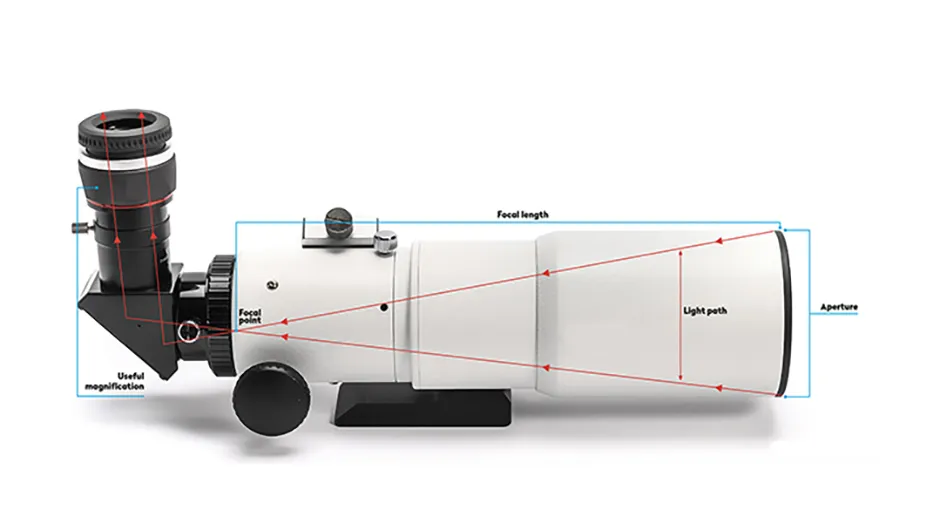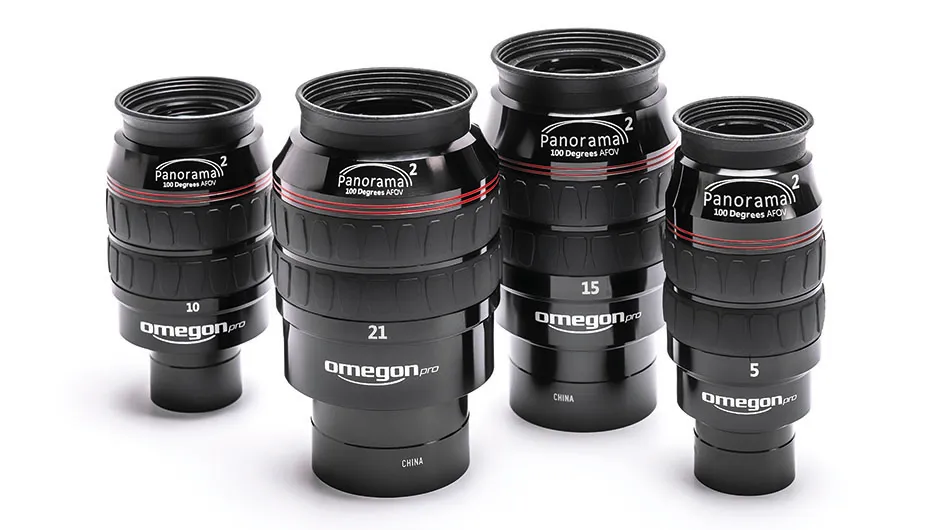Focal length is one of several parameters that make up the specification of a telescope.
It denotes the effective distance that the light received from a distant object travels from the primary optic (the concave mirror of a reflector or the lens of a refractor) to the focal plane, which is the point at which the light is focused.
The practical significance of focal length is that, with any given eyepiece, long focal lengths produce a narrower field of view and greater magnification, while short focal lengths produce a wider field of view and lower magnification.
- Find out more in our guide to telescope stats

Short and long focal lengths
The focal length of a telescope defines the distance from the primary lens or mirror to the point at which the light is focused.
Where curved surfaces are used in the secondary mirror design of telescopes like Ritchey-Chrétiens, Schmidt-Cassegrains and Maksutov-Cassegrains, this distance is an ‘effective’ distance.
Short focal lengths provide low magnification with a given eyepiece and are better suited for observing larger deep-sky objects like extended nebulae and open star clusters.
Long focal lengths provide high magnification with a given eyepiece and are better suited for observing the Moon, planets, globular clusters and galaxies.

Eyepiece focal lengths
An eyepiece works by adjusting its distance from a telescope’s focal plane (the point at which light through the scope is focused) so that a ‘pencil’ of parallel light rays, known as the exit pupil, enters the pupil of the observer’s eye.
When the eyepiece is in focus, its focal length is the distance from the scope’s focal plane to the point inside the eyepiece where the light rays become parallel thanks to being refracted by the lens elements, and it’s usually in millimetres.
The magnification of the telescope/eyepiece combination can be worked out by dividing the scope’s focal length by the eyepiece’s focal length.
Email your astronomy queries to us at scopedoctor@skyatnightmagazine.com and they could get answered in a future issue of BBC Sky at Night Magazine.
